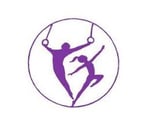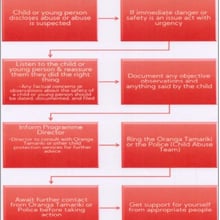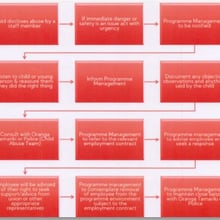Policies
Child Protection Policy
Safeguarding and Child Protection Policy
Hastings Gymnastics will not disclose any information regarding a child to anyone other than the account holder unless required to or requested to in accordance with our legal obligations under the Vulnerable Children's Act 2014, the Children and Young People's Act 2014 or Young People's Well Being Act 1989 or other relevant legislation.
Custody arrangements
Parents and caregivers MUST advise Hastings Gymnastics of any informal and formal Custody arrangements which exclude one or other parents, family members or caregivers having access or limited access to children including any changes to those arrangements.
Custody arrangements or changes with children must be notified to the Hastings Gymnastics Programme Management as soon as they become active.
If custody is due to Court arrangements, these forms need to be provided to Hastings Gymnastics as soon as possible.
Child Abuse
Maintaining the well-being and safety of children and young people is a paramount goal of Hastings Gymnastics. This includes the prevention of Child Abuse.
The interest and welfare of the child or young person will be the primary consideration when any action is taken regarding suspected abuse. Hastings Gymnastics supports the roles of Statutory Agencies (the Police and Oranga Tamariki) in the investigation of abuse and will report cases of suspected abuse to these Agencies according to the process outlined below.
Hastings Gymnastics will maintain a good working relationship with the Statutory Agencies and be familiar with the laws which serve to protect children and young persons from abuse. We will consult with these and other Agencies which have specialist knowledge to help protect children from abuse.
Staff will not assume responsibility beyond the level of their experience and training.
This Policy guides the actions of the organisation whenever there is a concern about the abuse of children.
This includes recording concerns, if a child discloses abuse, suspected abuse by a Staff member or suspected abuse between children at the Programme.
It also provides Guidelines for staff to help minimise the risk that they may be subject to an allegation of abusive behaviour.
Definition of Child Abuse
"Any act by which an individual, institution or society as a whole that interferes with the
well-being of a child or young person and deprives that child or young person of his or her rights'.
There are six types of child abuse:
- · Sexual abuse occurs when someone uses his or her power over the child, or takes advantage of the child's trust and respect, to involve the child in sexual activity
- · Physical abuse is non-accidental injury by somebody and includes abusive administration of drugs or alcohol to a child
- · Emotional abuse is when a child's self-esteem is attacked by somebody to coerce the child into doing what the abuser wants them to do
- · Neglect is a denial of the basic needs/ rights of nurturing, food, and shelter, so that the child fails to thrive. It must be seen as a form of child abuse
- · Family violence may be witnessed or experienced by children and involve physical, sexual, and emotional abuse
- · Cyber bullying is usually perpetrated using social media networks, online games, and mobile phones. This can include spreading rumours, posting nasty, embarrassing, or intimidating messages, images and/or videos
Training
Hastings Gymnastics is committed to maintaining and increasing Staff awareness of how to prevent, recognise, respond and report abuse through appropriate training. As part of their induction, new Staff will be made aware of the Child Protection Policy and process for reporting concerns. This Policy Training will be refreshed yearly.
The Head Coach/Child Protection Lead will complete a certified Child Protection training course at a minimum of every two years.
Responding to Child Abuse
Hastings Gymnastics will act on recommendations made by Statutory Agencies concerning the official reporting of suspected abuse and on consulting with families. Hastings Gymnastics has Suspected Abuse forms which will be completed when there is any suspected abuse. These will then be forwarded to Gymnastics NZ for assessment and forwarded to the appropriate Agencies.
Staff will respond to suspected child abuse or any concerning behaviour by documenting observations, impressions, and communications in a confidential register.
This will be kept separate from programme diaries, day books, communication books and enrolment information etc.
Information volunteered by a child should be fully and accurately recorded on a Suspected Child Abuse form.
No child should be interviewed or in any way questioned about the suspected abuse, particularly sexual abuse. Staff involved in cases of suspected child abuse, are entitled to have support and the Programme will maintain knowledge of such individuals, Agencies and Organisations in the community that can provide Staff such support.
At Risk Situation
Hastings Gymnastics cares about the community and it’s peers and endeavours to be a part of keeping it safe for all. If Hastings Gymnastics hears, or sees, or is told about a situation directly or indirectly affecting a child or community member, it will be noted on an At-Risk Situation Record and will be shared with any and all appropriate authorities.
Peer abuse
Hastings Gymnastics will ensure that the safety of the child or young person is paramount. No form of physical, sexual, or verbal harassment, or violence from peers, will be sanctioned or minimised in any way.
While the situation is being evaluated the children or young people concerned will be separated. It is essential to reduce further emotional trauma for the victims who may be fearful and distressed if they are in contact with possible abusers.
In some cases where the abuse has occurred at the programme immediate suspension may be appropriate, as outlined in the Behaviour Management Policy.
Hastings Gymnastics will make every effort to keep specific and identifying information as private as possible. Nothing will be passed onto the media from Hastings Gymnastics, and parents will be asked to keep information as private as possible.
Supervision Guidelines
To minimise the risk of actual or alleged abuse in the Programme, these Guidelines are in place
- All staff should examine the opportunities or possible situations there are to be alone with children. This should be avoided wherever possible. If you are alone use extremely careful judgment
- Wherever possible an open-door policy for all spaces should be used (excluding Bathrooms)
- Staff should be aware of where all children are, at all times and check to ensure what they are doing, is appropriate
- Be aware of situations where children are out of sight together (dens, play huts etc.) and supervise accordingly
- Visitors to the Gymnasium should be monitored at all times by Programme Staff
- All Volunteers should be monitored by the Programme Staff
- Where a child requires assistance, e.g. intellectually, or physically disabled – where possible, involve the parents/caregivers and outside agencies (such as Group Special Education, Ministry of Education) to assist. If this assistance is not available, ensure that the Staff members are aware of the appropriate procedures when giving assistance
- Staff are not permitted to transport a child on their own (at all times), unless an emergency requires it
Response to Suspicions or Disclosure of Child Abuse
(see chart 1 attached below)
Allegations of Abuse against a Staff member
Where it is suspected that child abuse has been perpetrated by a Staff member or other person assisting with the Programme, the matter must be reported promptly to the Programme Manager.
Under no circumstances should the child making the allegation be exposed to unnecessary risk. This may require Programme Management to contemplate the removal of the employee from the Programme environment subject to the requirements of the applicable Employment Contract.
All actions will be undertaken discreetly and as confidentially as possible.
Programme Management will ensure the following process is undertaken:(see chart 2 attached below)


